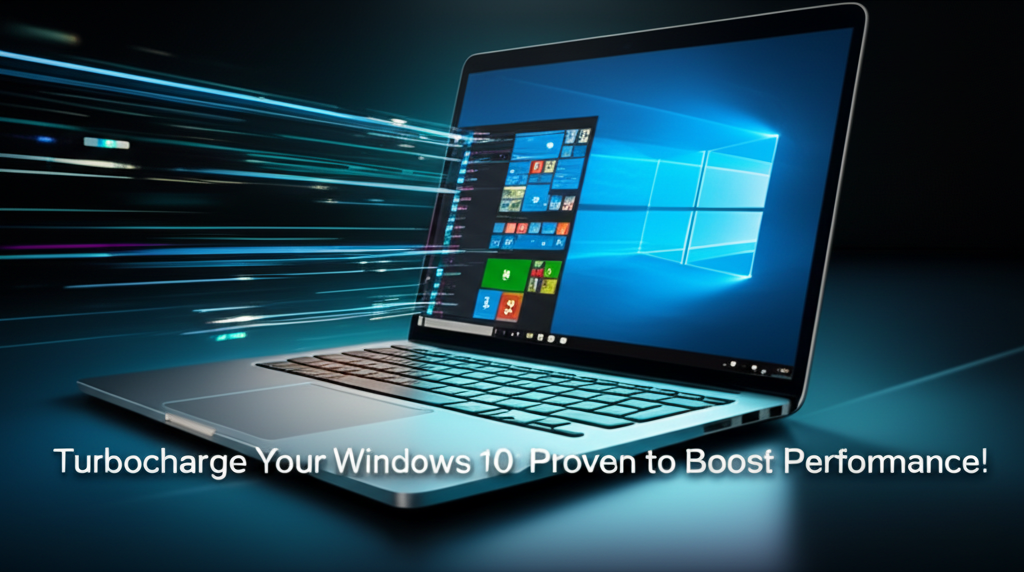Introduction
Windows 10 is one of the most popular operating systems in the world, powering millions of devices. However, over time, users often find their systems lagging and running slower than expected. This decrease in performance can impact your productivity, making everyday tasks frustrating. In this guide, we’ll explore proven tips and techniques to help you turbocharge your Windows 10 system, ensuring it runs smoothly and efficiently.
Whether you’re a casual user, a student, or a professional, this guide aims to help you overcome common performance issues and get the most out of your Windows 10 experience. With our step-by-step instructions and troubleshooting tips, you’ll be able to see noticeable improvements in your system’s speed and responsiveness. Let’s dive in!
1. Assessing Your System’s Performance
Before making any changes, it’s essential to assess your current system performance. This step will provide a baseline for comparison after implementing various tweaks.
Step 1: Check Task Manager
- Press
Ctrl + Shift + Escto open the Task Manager. - Click on the Performance tab.
- Here, you can view CPU, Memory, Disk, and GPU usage.
Step 2: Identify Resource-Intensive Applications
- Stay in the Task Manager and click on the Processes tab.
- Look for applications using excessive CPU or Memory. Right-click and select End Task if needed, but this should only be for apps you’re not currently using.
Common issues to look for:
- Background applications hogging resources.
- Startup programs that launch automatically.
2. Optimize Startup Programs
When your computer boots up, several programs may load unnecessarily, consuming valuable system resources.
Step 1: Disable Unnecessary Startup Programs
- Open Task Manager (
Ctrl + Shift + Esc). - Go to the Startup tab.
- Right-click on any app you don’t need to run at startup and select Disable.
Screenshot 1: Task Manager Startup Tab
(Insert Screenshot Here)
By minimizing the number of startup applications, you can significantly speed up the boot process and overall performance.
3. Clean Up Your Hard Drive
Removing unnecessary files can free up space and help your system run faster.
Step 1: Use Disk Cleanup
- Search for “Disk Cleanup” in the Windows search bar.
- Select the drive you want to clean (usually the
C:drive). - Choose which files to delete (temporary files, system files, etc.), and click OK.
Screenshot 2: Disk Cleanup Tool
(Insert Screenshot Here)
Step 2: Uninstall Unnecessary Applications
- Open Settings (
Windows key + I). - Navigate to Apps > Apps & features.
- Scroll through the list and click on any program you don’t need, then select Uninstall.
This will free up additional space and potentially increase performance.
4. Adjust Visual Effects for Performance
Windows 10 is visually appealing, but those graphics can consume resources. Adjusting these settings can lead to better performance.
Step 1: Change Performance Options
- Search for “Performance Options” in the Windows search bar.
- Click on Settings under the Performance section.
- In the Performance Options window, select Adjust for best performance. This will disable most visual effects.
- Alternatively, you can customize which effects to keep enabled.
Screenshot 3: Performance Options
(Insert Screenshot Here)
Common Errors and Quick Fixes
- Error: New settings do not seem to take effect.
- Quick Fix: Restart your computer.
5. Update Windows and Drivers
Keeping your operating system and drivers updated can fix bugs and improve performance.
Step 1: Update Windows
- Open Settings (
Windows key + I). - Navigate to Update & Security > Windows Update.
- Click on Check for updates.
Step 2: Update Drivers
- Open Device Manager (right-click the Start button and select it).
- Expand categories to find devices.
- Right-click on your device, and select Update driver.
Screenshot 4: Device Manager
(Insert Screenshot Here)
6. Use Built-In Windows Tools for Maintenance
Windows 10 has tools designed to diagnose and fix common issues.
Step 1: Run the Troubleshooter
- Open Settings (
Windows key + I). - Go to Update & Security > Troubleshoot.
- Click on Additional troubleshooters.
- Select the relevant troubleshooter for your issue and follow the prompts.
Screenshot 5: Troubleshooter
(Insert Screenshot Here)
7. Alternative Software Recommendations
In addition to built-in Windows tools, there are third-party applications that can enhance your system’s performance.
Recommended Software:
- CCleaner: Cleans up registry and unnecessary files that slow down your system.
- Malwarebytes: Scans for malware and threats that could affect performance.
- Defraggler: A user-friendly tool to defragment and optimize hard drives.
Step 1: Using CCleaner
- Download and install CCleaner from the official website.
- Open the application and click on Run Cleaner after selecting which items to clean.
Screenshot 6: CCleaner Interface
(Insert Screenshot Here)
8. Power User Tweaks
For those willing to dig deeper, here are some advanced performance tweaks.
Step 1: Disable Background Apps
- Open Settings (
Windows key + I). - Navigate to Privacy.
- Scroll down to the Background apps section.
- Toggle off apps you don’t want running in the background.
Step 2: Adjust Virtual Memory
- Press
Windows key + Rto open Run, and typesysdm.cplthen press Enter. - Go to the Advanced tab, and click on Settings under Performance.
- Go to the Advanced tab in the new window and click on Change under Virtual Memory.
- Uncheck Automatically manage paging file size for all drives.
- Set a custom size or select System managed size.
Screenshot 7: Virtual Memory Settings
(Insert Screenshot Here)
9. Summary Checklist for Quick Reference
As you’ve explored various methods to enhance your Windows 10 performance, here’s a concise checklist to keep handy:
Quick Reference Checklist:
- Open Task Manager: Assess CPU and Memory Usage.
- Disable Unnecessary Startup Programs: Optimize boot times.
- Run Disk Cleanup: Free up disk space.
- Uninstall Unwanted Applications: Clean your system.
- Adjust Visual Effects: Increase performance.
- Check for Updates: Keep Windows and drivers up to date.
- Run Troubleshooters: Diagnose issues.
- Consider Alternative Software: Tools like CCleaner.
- Disable Background Apps: Further performance boosts.
- Adjust Virtual Memory as needed: Optimize memory usage.
Conclusion
By following the steps outlined in this guide, you can significantly improve your Windows 10 performance. Making small adjustments can accumulate into a noticeable enhancement, transforming how your system operates. Remember, regular maintenance and updates are key to keeping your computer running smoothly.
Feel free to revisit sections of the guide as needed, and don’t hesitate to dive deeper into advanced tweaks as you become more comfortable with your Windows 10 operating system. Happy optimizing!

